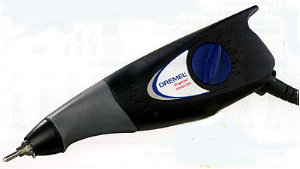כ"ח טבת ה'תשס"ז
Tonight is the esbat of the Dark Moon. In contrast to Rosh Chodesh, which notes the first sliver of silvery light sighted each month, the Dark Moon is fully within the Shadow of Night. Light represents activity. Darkness represents rest. In other words, while Rosh Chodesh celebrates rebirth, the Dark Moon rests symbolically as a tzelem Elohim within the Dark Essence of Ein Sof.
Consequently, with the
Light resting within the completely Dark Essence of Ein Sof, the Dark Moon esbat represents a shabbat of the moon. The moon generally corresponds to soul power of
Emet (אמת truth) and to the sefirah
Yesod (יסוד foundation). Thus, this
esbat of Tevet, my athame will be infused with the Essential Foundation of Truth and the power of shabbat consciousness.
The esbat nocturnal ritual (performed surrounding midnight):
Complete steps 1, and 3 as found in
Jewitch Shabbat Ritual.
Set up altar to basically include a central black taper candle standing upon a pentagram tile, a red pomegranate votive candle, and an incense blend [2] prepared with a teardrop within cauldron censer.
Light black taper (projective energy), saying:
Beruchah at Shechinah HaShem Chai, malchat shel Shabbat v'Esbat b'laylah, who transforms darkness into brilliance.Use flame from the taper to light pomegranate votive (receptive energy) candle, saying:
Beruchah at Shechinah HaShem Chai, ruach shel Shabbat v'Esbat b'laylah, move through the Shadow of Night and be One with the Light.Use flame from the taper to light the incense, saying:
Blessed are You Shechinah Acknowledger of Life, ruler of the universe, who has gifted me with a portion of Truth.Beruchah at Shechinah HaShem Chai, malkat ha'olam, she'natnah li chemdat emet.
Wipe down both sides of the blade of the athame with a magnet.
Rinse with consecrated water [1]. Don't wipe dry.
Pass athame through incense smoke, saying:
ישמך אלהים השם חיי כאמת וחנה
Y'simech Elohim HaShem Chai k'Emet v'Chanah.May the Goddess who acknowledges life make you as truth and favor.
Go outside and under the Dark Moon, cast the circle (step 7
here) using the index and middle fingers of the right hand.
Hold athame straight up with both hands directly over the crown of the head, saying:
With the Dance of Holy Darkness, I dedicate, consecrate, awaken, charge and infuse you.Encircling the tip deosil overhead 8 times, saying each time:
ברוך שם כבוד מלכותה לעולם ועד
Baruch shem kevod malchutah le'olam va'ed.Blessed is the Glorious Name, Her Kingdom stands forever and ever.Following the eighth blessing, bring the athame parallel to the heart, point up, saying:
אמן
Amen.Turning athame, point down, saying:
So mote it be.Draw a pentagram invoking earth into the soil. Wipe off any dirt from the tip of the blade with the middle fingers, using the left middle finger for one side and the right middle finger for the other.
Kiss both sides of the blade near the middle and the hilt.
Bring the athame inside and place on the altar, saying:
With the Divine Shadow be embraced. So mote it be.
Allow candles and incense to burn themselves out. Leave up circle of protection. Wrap athame in black cloth and store with altar tools after the flames and incense have become dark.
Footnotes:
[1] Banished of negativity and blessed.
[2] Dragon's blood, frankincence, myrrh, pinch of salt, drop of vanilla oil, drop of olive oil, drop of red wine.
 י'ג בכסלו תשס"ח
י'ג בכסלו תשס"ח






